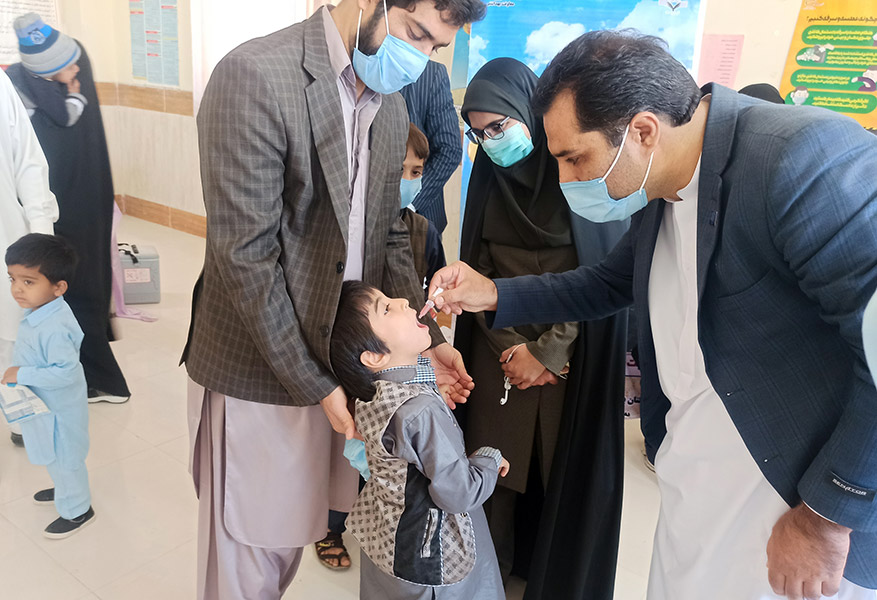 In February and March 2021, children under age five were vaccinated against polio in 30 districts of four provinces in the Islamic Republic of Iran.
In February and March 2021, children under age five were vaccinated against polio in 30 districts of four provinces in the Islamic Republic of Iran.
The Islamic Republic of Iran’s last endogenous case of wild poliovirus (WPV) was in 1997, and its last imported case of WPV was in May 1998. The country was declared polio-free in 2006, and maintains this status to date.
In April 2019, wild poliovirus type 1 (WPV1) was detected in environmental surveillance (ES) in Sistan and Balochistan province, bordering Afghanistan and Pakistan, and was genetically linked to the strain in Pakistan. Two campaigns were carried out in Sistan and Balochistan province using bivalent oral polio vaccine (bOPV), in January and February 2019. Following the detection, teams vaccinated those had been missed during the last campaign and conducted a detailed survey of vaccination levels in the area. The virus, which had been imported from Pakistan, was unable to circulate and was not seen again.
More recently, multiple environmental surveillance samples collected in 2020 and 2021 have detected vaccine-derived poliovirus type 2 (VDPV2) in Sistan and Balochistan province. In response, the Ministry of Health and Medical Education, supported by WHO, has implemented 2 targeted supplementary immunization activities (SIAs) in February and March 2021, using monovalent oral polio vaccine type 2 (mOPV2), and intensified searches for acute flaccid paralysis (AFP).
The Islamic Republic of Iran has a robust routine immunization system, which is a cornerstone of its public health care service. In addition to maintaining high routine immunization coverage for polio and other vaccine preventable diseases, the country regularly implements SIAs for polio.
Polio surveillance in the Islamic Republic of Iran
Health workers in the primary health care system, a mix of public, private and nongovernmental organization-provided care, actively screen for AFP and to date maintain a non-polio AFP rate of around three – well above the international standard of two or more. The stool adequacy rate sits at around 96%, well above the international standard of 80%.
Environmental surveillance was initiated in November 2017 with five sites in Sistan and Balochistan province. With no environmental surveillance taking place beyond this province, a key priority is to facilitate the further roll-out of environmental surveillance in the Islamic Republic of Iran.


